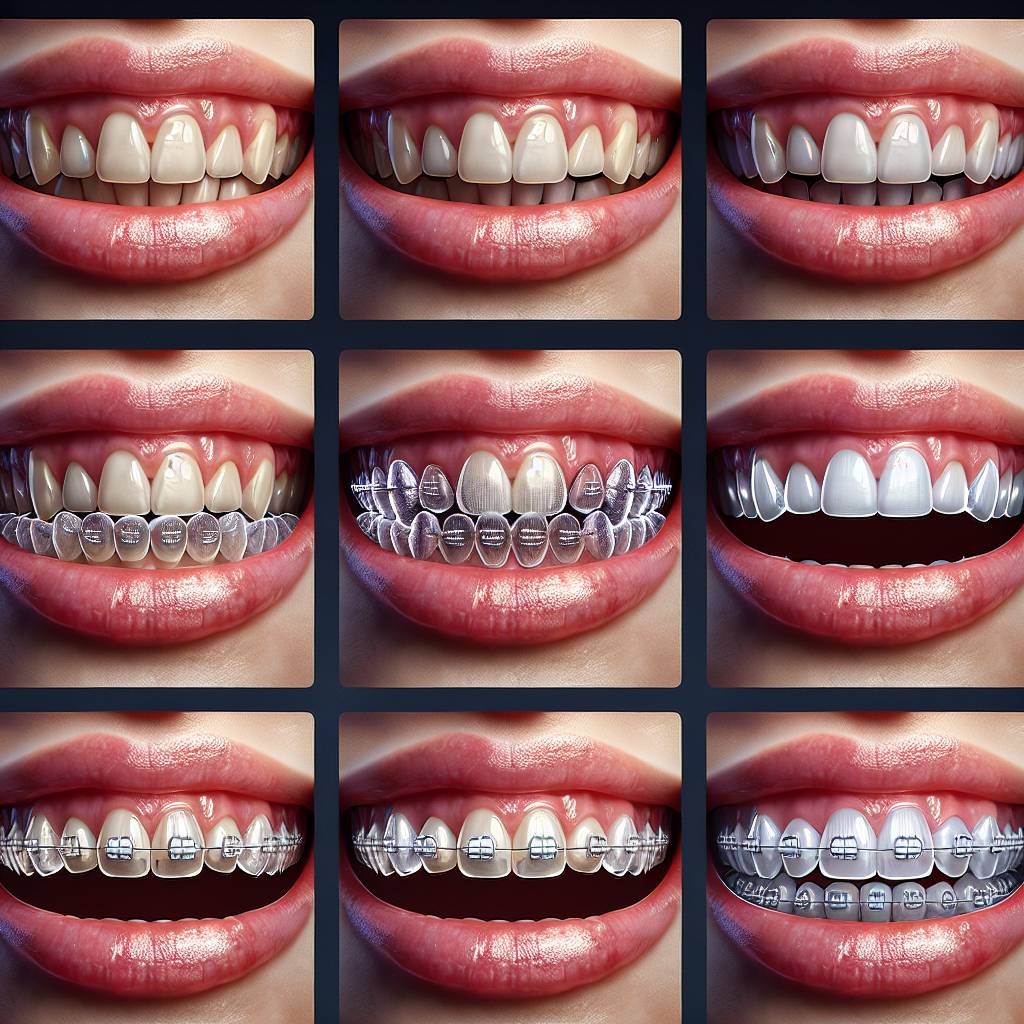Invisalign is an increasingly popular choice for orthodontic treatment. This revolutionary system uses a series of customized, clear aligners to gradually shift your teeth into the desired position. But how long does Invisalign take to fix your teeth? The answer depends on several factors, including the severity of the misalignment and the complexity of the treatment plan. In general, most people complete their Invisalign treatment within 12 to 18 months.Invisalign is a teeth-straightening system that uses clear, removable aligners to adjust your teeth. The aligners are designed to gradually shift your teeth into the desired position and are made of a smooth, comfortable and virtually invisible plastic that you wear over your teeth. Invisalign is an increasingly popular alternative to traditional metal braces as it is virtually invisible, more comfortable and requires fewer office visits.
How Does Invisalign Work?
Invisalign is a modern orthodontic system that works to straighten your teeth using clear, removable aligners. These aligners are custom-made for your mouth and are designed to gradually move your teeth into their desired position. Each set of aligners is worn for two weeks before being replaced with the next set in the series. As you progress through the series, your teeth will move closer and closer to their ideal position.
Invisalign works by applying a gentle force to your teeth, which causes them to shift into the desired position over time. To ensure that each aligner fits perfectly, Invisalign uses advanced 3D imaging technology as well as medical-grade plastic materials. This technology helps create an accurate impression of your teeth so that the aligners fit snugly and comfortably over them.
Your Invisalign treatment plan will be tailored based on an initial assessment by your orthodontist or dentist. After taking impressions of your teeth and making a plan for how they should be moved into position, they will create a series of custom-fit aligners that you will wear throughout your treatment period.
The duration of an Invisalign treatment varies depending on how much movement is needed to achieve desired results, but it typically takes around nine to fifteen months on average. During this time you will need to visit your orthodontist or dentist every six to eight weeks so they can assess how well the treatment is working and make any necessary adjustments to the aligner series if needed.
At the end of treatment, you may need to wear a retainer at night in order to stabilize your new smile and prevent any further movement of your teeth back into their original positions. With proper care and maintenance, Invisalign can give you straighter teeth and a more confident smile that lasts for years!
How Long Is the Treatment Process With Invisalign?
The treatment process with Invisalign can vary depending on the severity of your orthodontic concerns. Generally, it takes about 12 to 18 months to complete the treatment process with Invisalign. However, some cases may take longer or shorter than this timeline, depending on your individual needs and goals. Your orthodontist will be able to provide a more accurate timeline for you based on your specific case.
Invisalign works by slowly shifting your teeth into their desired alignment through a series of customized aligners. You will need to wear each aligner for at least 22 hours a day in order for them to work properly and efficiently move your teeth into place. Your orthodontist will evaluate your progress with each set of aligners and determine when it is time for you to switch to the next set.
Your orthodontist will also be able to let you know if any additional treatments are necessary in order to achieve optimum results with your Invisalign treatment. This could include additional visits or adjustments in order to ensure that the treatment is progressing as expected.
Ultimately, how long it takes you to complete an Invisalign treatment depends on how closely you follow instructions from your orthodontist and how quickly you adapt to wearing the aligners for extended periods of time. By taking good care of your aligners and following all instructions from your orthodontist, you can help ensure that you get through the treatment process as quickly and efficiently as possible.
What Are the Benefits of Invisalign?
Invisalign is an orthodontic treatment that uses clear, removable aligners instead of traditional metal braces to straighten teeth. It has numerous benefits compared to traditional braces, including being barely visible and more comfortable to wear. Additionally, the aligners are removable, making it easier to brush and floss your teeth as well as eat whatever foods you prefer. Invisalign can also help improve your oral health and reduce gum irritation associated with traditional braces. Here are some of the other benefits of Invisalign:
1. Convenience: Invisalign aligners can be easily removed for eating, brushing, and flossing. This makes it much more convenient than traditional braces, which are permanently attached to the teeth.
2. Comfort: The clear plastic used in Invisalign is much more comfortable than metal brackets and wires used in regular braces. This makes it a better option for those who have sensitive mouths or gums.
3. Discreetness: The clear plastic aligners used in Invisalign make them virtually invisible when you smile or talk, so no one will notice you are undergoing orthodontic treatment unless you tell them about it.
4. Faster Treatment Time: Since Invisalign aligners can be removed for eating and cleaning your teeth, they tend to work faster than traditional braces since they are not hindered by food particles getting stuck in the brackets and wires of regular braces.
5. Improved Oral Health: The removable nature of the aligners makes it easier to brush and floss your teeth while undergoing treatment, which helps improve overall oral hygiene compared to traditional braces where brushing and flossing can be difficult due to the metal brackets and wires getting in the way. This can help reduce plaque build-up on your teeth as well as gum irritation caused by food particles getting stuck in traditional braces.
What Are the Possible Drawbacks of Invisalign?
Invisalign has become a popular choice for those looking to straighten their teeth without traditional braces. Although it can be an effective treatment, there are some potential drawbacks that should be considered before making a decision.
One of the most common drawbacks of Invisalign is the cost. It tends to be more expensive than traditional braces, and most insurance plans do not cover it. Additionally, there is no guarantee that it will work on every patient; it may not be effective for severe cases of misalignment or overcrowding.
Invisalign requires a lot of commitment from the patient in order to achieve optimal results. The aligners must be worn for at least 22 hours each day and switched out every two weeks. This means that patients must consistently wear their aligners or else treatment could be delayed or ineffective.
In addition, Invisalign can cause some mild discomfort when the aligners are first put in place as they adjust to the shape of your mouth. This discomfort should subside after a few days but can be uncomfortable for some patients in the meantime.
Finally, Invisalign can take a long time to produce results; it usually takes between nine and fifteen months before the desired result is achieved. Some people may find this timeframe too long and opt for traditional braces instead.
Overall, Invisalign can be an effective treatment for people seeking to straighten their teeth, but it is important to weigh all possible drawbacks before making a decision about which option is best for you.

Are There Any Age Restrictions for Invisalign?
Invisalign is a popular orthodontic treatment that uses clear aligners to straighten teeth. It is a great option for adults and teenagers who are looking for an aesthetically pleasing way to correct their smiles. However, there are some age restrictions when it comes to Invisalign treatment.
Generally, patients must be at least 12 years old before they can be eligible for Invisalign treatment. The reason for this is because the patient must have all of their adult teeth in place before they can begin treatment. If the patient does not have all of their adult teeth, the aligners may not fit properly and the treatment may need to be adjusted or postponed until all of the adult teeth are in place.
Invisalign can also be used on older adults, but there are certain factors that will need to be taken into consideration before treatment begins. For instance, older adults may have some tooth decay or periodontal disease which could impact how successful Invisalign will be. Additionally, some older adults may not have enough bone structure or gum tissue to allow the aligners to fit properly and move the teeth as desired.
Overall, Invisalign can be used by both teenagers and adults as long as they meet the age requirement of 12 years old and do not have any underlying dental issues that could affect their treatment outcome. It is important to consult with an orthodontist before beginning any orthodontic treatments in order to ensure that it is right for you or your child’s individual needs and goals.
How Long Does It Take to See Results with Invisalign?
Invisalign is an effective orthodontic treatment for straightening teeth. The results of this treatment can be seen in a matter of weeks. Depending on the individual, Invisalign can take anywhere from four to six months to complete the full course of treatment. During this time, patients will experience gradual changes in their smile as their teeth become straighter and more aligned.
The length of time it takes to see results with Invisalign will vary depending on the severity of the misalignment and how quickly a patient responds to the treatment. Generally speaking, most patients will start to see noticeable changes in their smile after wearing their aligners for about two weeks. After this initial period, patients should expect to see more significant changes in their smile every two weeks.
At each of these stages, your orthodontist will assess your progress and make any necessary adjustments to ensure that you are achieving desired results. This process is often referred to as “progress checks” and will help ensure that your Invisalign treatment is proceeding as planned.
After completing your full course of treatment, you should be able to see a dramatic difference in your smile. Depending on the severity of your misalignment prior to treatment, you may even notice an improved bite or better overall oral health due to improved alignment of your teeth and jaw.
Overall, it typically takes between four and six months for Invisalign patients to achieve desired results; however, some people may require additional treatments or longer periods depending on their individual needs and goals for treatment. Your orthodontist can provide more information about how long it may take you specifically to reach desired outcomes with Invisalign.
How Much Does Invisalign Cost to Fix Teeth?
Invisalign is a popular orthodontic treatment option that offers a discreet way to straighten teeth. It is used to correct a variety of misalignment issues, from overcrowding and gaps to overbite and underbite. While the cost of Invisalign can vary depending on the individual, the average cost is typically between $3,500 and $8,500.
The total cost of Invisalign depends on a number of factors, including the complexity of your case, how many aligners are needed, the length of treatment, and your location. Typically, more complex cases may require additional aligners and a longer treatment time frame. Your dentist will be able to give you an accurate estimate of how much your Invisalign treatment will cost after evaluating your dental records and conducting an exam.
In addition to the cost of Invisalign itself, there may be additional costs associated with your treatment such as checkups and adjustments. Your dentist may also recommend additional treatments such as tooth whitening or veneers in order to achieve optimal results. These extra treatments will add to the overall cost.
Fortunately, many dental insurance plans cover all or part of the cost for orthodontic treatments like Invisalign. It’s important to check with your insurance provider before beginning any kind of orthodontic work so that you understand what’s covered and what isn’t. Some providers may cover up to 50 percent of the total cost while others may only cover basic services such as checkups or x-rays.
There are also financing options available for those who cannot afford to pay for Invisalign outright. Many dentists offer payment plans that allow patients to spread out their payments over time in order to make it more affordable. Additionally, some patients may be eligible for low-interest loans or grants from organizations that specialize in providing financial assistance for medical expenses such as orthodontic treatments like Invisalign.
Overall, the average cost for Invisalign treatment can range from $3,500-$8,500 depending on individual factors such as complexity of case and length of treatment time frame. However, there are financing options available that make it possible for those who cannot afford it upfront to still receive this effective orthodontic treatment option without breaking their budget.

Conclusion
Invisalign is a great choice for those looking to straighten their teeth without the hassle of metal braces. The treatment time varies depending on the severity of the case, but generally takes between 12-18 months. Invisalign is an effective way of improving your smile and can be completed in a relatively short amount of time. As with all orthodontic treatments, it is important to follow your dentist’s instructions for best results. With proper care and maintenance, Invisalign can help you achieve a beautiful, healthy smile that will last a lifetime.
Overall, Invisalign is an excellent option for people looking to improve their smiles without metal or ceramic braces. It is fast, comfortable, and effective, and requires significantly less maintenance than traditional braces. With Invisalign, you can be sure that you are getting the best possible care for your teeth and will soon have a beautiful smile you can be proud of.

